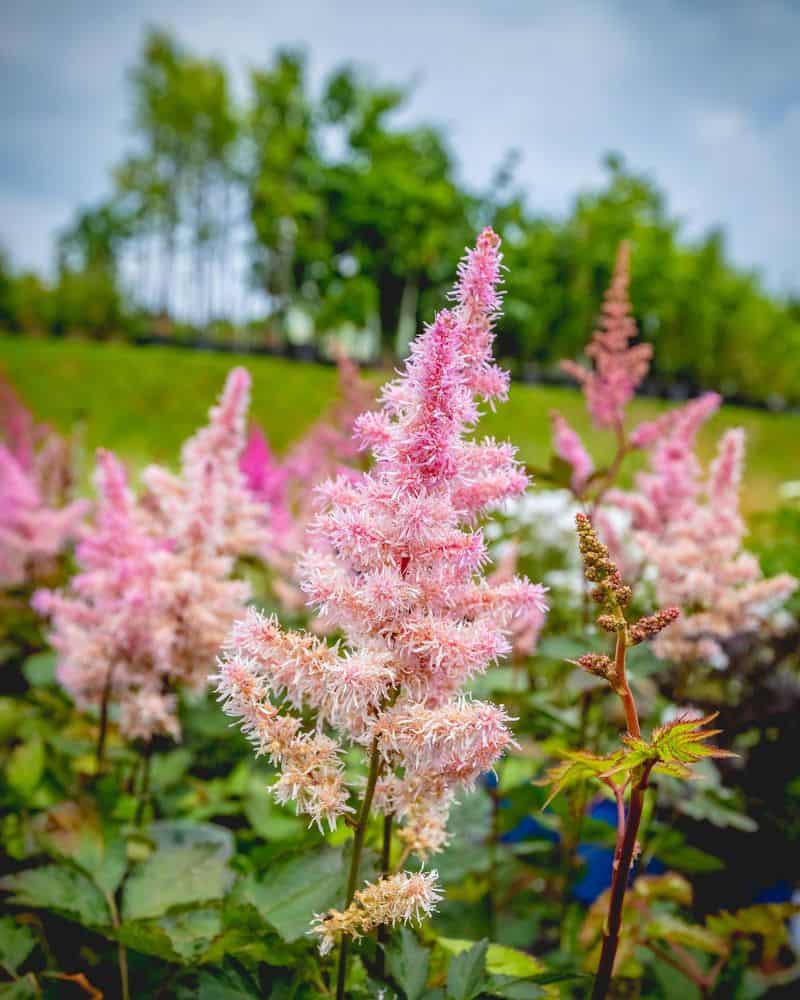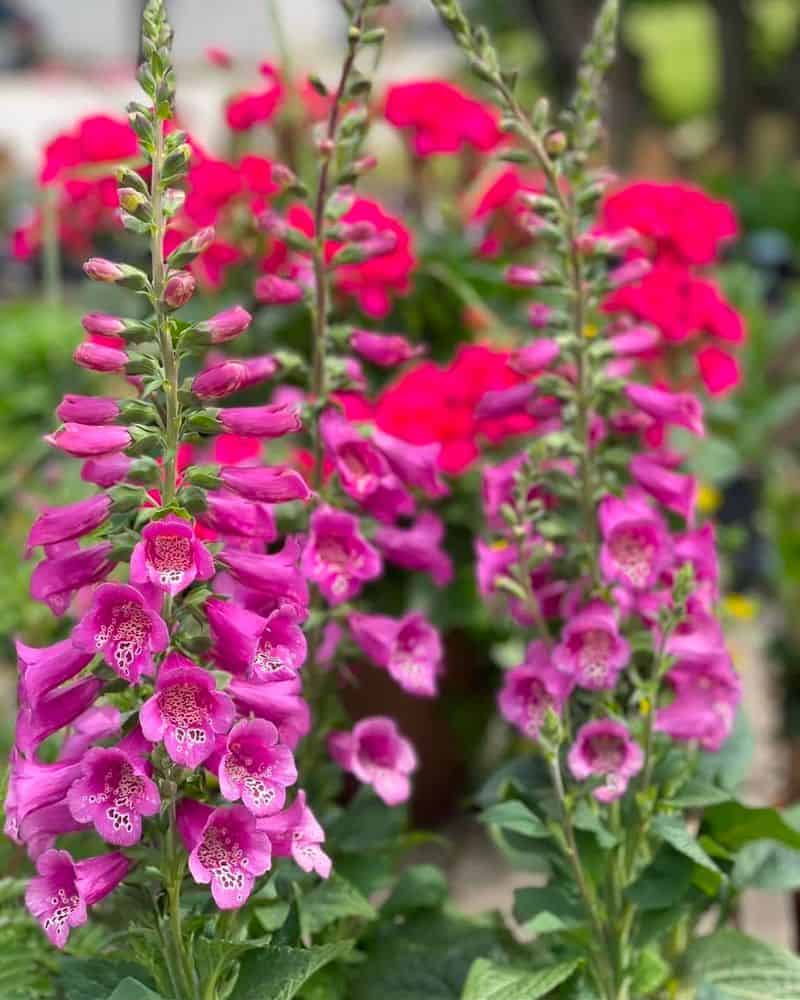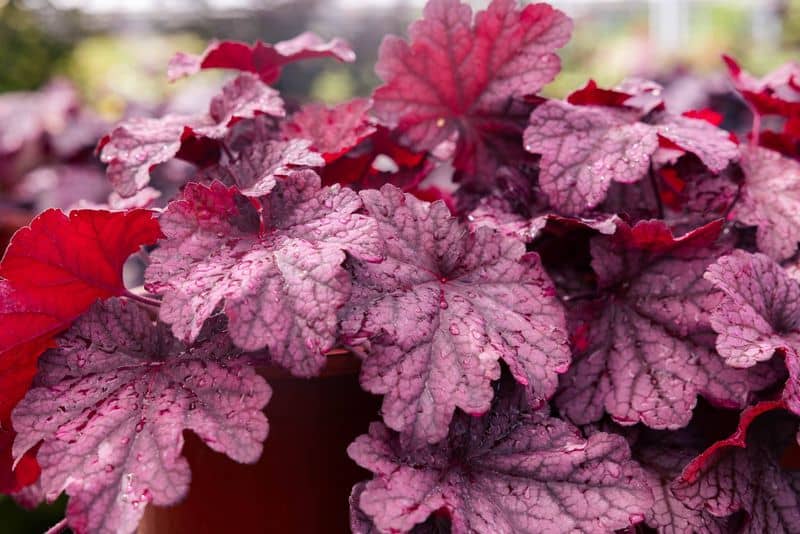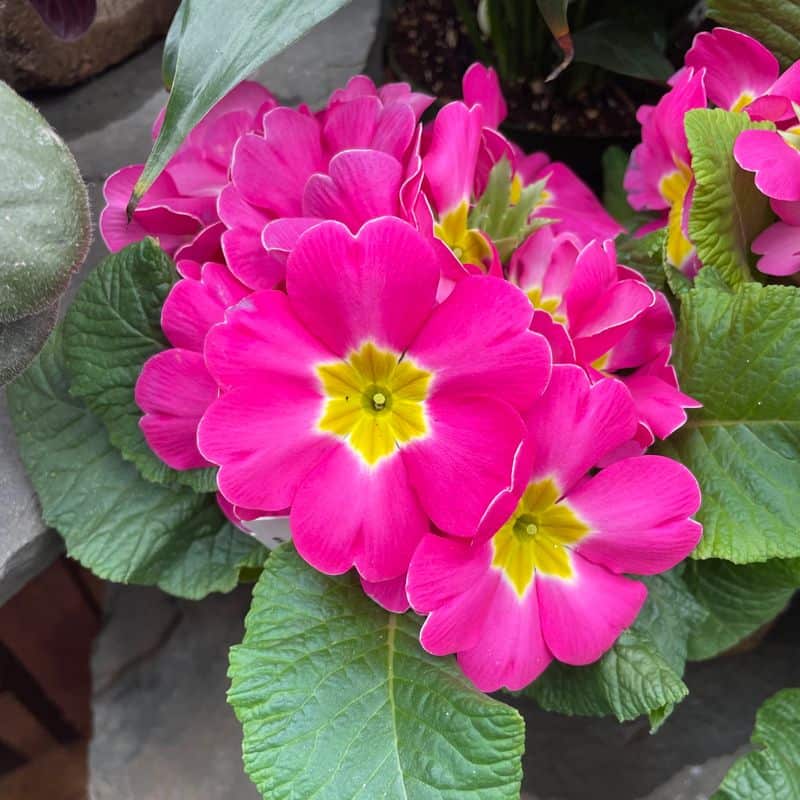Transform your garden into a whimsical paradise with these stunning pink perennials.
From the romantic blooms of the Bleeding Heart to the vibrant spikes of Foxglove, each plant brings its own charm and elegance.
Explore the diversity of textures, colors, and scents that these perennial plants offer, ensuring your garden remains enchanting year-round.
1. Astilbe (Astilbe spp.)
Astilbe is the diva of dappled shade, flaunting feathery plumes that sway like a dancer’s skirt in the breeze.
These pink beauties thrive in moist, well-drained soil, making them the ideal choice for those parts of the garden that feel like a rainforest retreat.
Divine and delicate, Astilbe’s fern-like foliage remains lush and verdant, adding texture even when its blooms are not in sight.
This perennial performer peaks in summer, showcasing a palette of pinks that range from blush to rose, ensuring your garden remains a visual delight.
2. Bleeding Heart (Dicentra spectabilis)
With flowers that resemble delicate pink hearts suspended on arching stems, Bleeding Hearts are the romantics of the garden world.
Perfect for shady spots, these perennials bloom in spring, offering a cascade of heart-shaped charm.
Their foliage, light and airy, complements the blossoms, creating a scenic backdrop. As summer heat intensifies, they may retire to rest, but their early display is a breath of fresh air after winter’s retreat.
Ideal for adding nostalgic romance, Bleeding Hearts thrive in cool, moist conditions, making them a must-have for any whimsical garden.
3. Coneflower (Echinacea purpurea)
Coneflowers stand tall and proud, waving their large, pink daisy-like blooms with spiky centers like nature’s cheerleaders.
Known for their resilience, these perennials brighten up any sunny spot and are a favorite of pollinators, luring butterflies and bees with their vibrant display.
Their petals, a striking shade of pink, offer a hardy and drought-tolerant option for gardeners.
As summer marches on, Coneflowers continue to strut their stuff, providing color and life when others have faded. Adding these to your garden ensures a lively, energetic atmosphere that’s hard to ignore.
4. Peony (Paeonia spp.)
Peonies are the grand dames of the garden, boasting luxurious, fragrant blooms that are as big as your hand.
These perennials are a spectacle in their own right, offering a range of pinks from soft pastels to vivid magentas.
Renowned for their lush, glossy foliage, Peonies are as much about their leaves as their flowers. The anticipation of their late spring explosion is worth the wait, as they burst forth with color and scent.
With a bit of patience, Peonies will reward you season after season, leaving a legacy of elegance and charm.
5. Foxglove (Digitalis purpurea)
Foxglove stands tall, a fairy-tale tower of tubular pink blooms, inviting bumblebees to their nectar-filled chambers.
Towering over other perennials, they provide vertical interest, lending a touch of drama and whimsy to any garden.
These biennials or short-lived perennials are self-seeding, ensuring their legacy continues year after year. Foxgloves thrive in partial shade, where their mysterious allure is most potent.
Their presence is both magical and practical, providing not just beauty but also a natural home for garden pollinators.
6. Yarrow (Achillea millefolium)
Yarrow brings a touch of the wild to the garden, with its clusters of pink blooms that sway like confetti in the breeze.
A hardy perennial, it thrives in sunny spots, requiring little care once established, making it the ultimate easy-going garden companion.
Its feathery foliage adds a soft texture, while its flowers attract beneficial insects. Yarrow is not just a pretty face; it’s a resilient plant that brings both aesthetic value and ecological benefits.
Perfect for naturalistic or wild gardens, it offers a splash of pink amidst greenery.
7. Phlox (Phlox paniculata)
Phlox is the garden’s sweet serenade, offering fragrant clusters of pink flowers that beckon butterflies and bees.
Known for its long blooming season, Phlox ensures gardens remain colorful and fragrant through the summer months.
This perennial is a versatile addition, thriving in sunny borders and garden beds. Its vibrant hues and delightful scent transform any garden into a sanctuary of serenity and joy, inviting you to linger.
With Phlox, you get beauty and a delightful aroma, making it a staple for anyone wanting a lively floral display.
8. Coral Bells (Heuchera spp.)
Coral Bells are the jewels of the shade garden, sporting tiny pink bell-shaped flowers that rise above stunning foliage.
This perennial is celebrated for its leaves, which come in an array of colors, from deep maroon to vibrant green.
While the flowers are charming, it’s the foliage that steals the show, offering year-round interest. Perfect for shady corners, Coral Bells add color and texture, transforming dull areas into vibrant displays.
Easy to grow and maintain, they’re a gardener’s delight, ensuring shade gardens never look dull.
9. Primrose (Primula spp.)
Primroses are the cheerful harbingers of spring, with their pink clusters bringing early color and joy to gardens. These perennials thrive in cool, shaded spots, making them perfect for woodland gardens.
Their bright yellow centers add a splash of sunshine, creating a delightful contrast with the pink petals. Primroses are easy to grow and maintain, offering a burst of color when most plants have yet to awaken.
Their welcoming blossoms make them a darling of gardeners everywhere, providing charm and freshness to any landscape.
10. Bee Balm (Monarda didyma)
Bee Balm is the party animal of the garden, drawing bees, butterflies, and hummingbirds with its vibrant pink spiky blooms.
Known for its aromatic foliage, this perennial offers a sensory delight, filling the garden with color and fragrance.
It thrives in sunny spots, where its exuberant blossoms can truly shine. Bee Balm is not just a feast for the eyes; its leaves can be used to make flavorful herbal teas.
This combination of beauty and utility makes it a favorite among gardeners looking to add both pizzazz and practicality.











